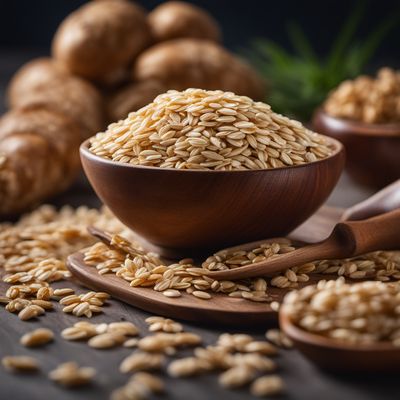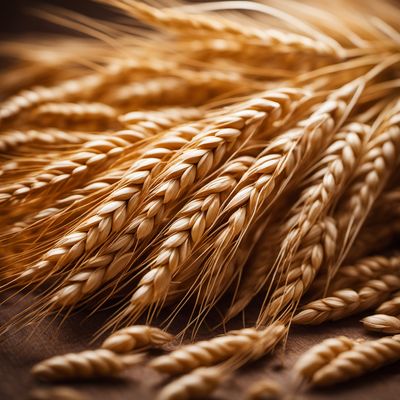
Ingredient
Spelt rolled grains
The Nutty Delight: Spelt Rolled Grains
Spelt rolled grains are whole grains that have been flattened through a rolling process, resulting in a chewy texture and nutty flavor. They are a nutritious choice, packed with fiber, protein, and essential minerals. These grains are commonly used in breakfast cereals, baked goods, and pilafs.
Origins and history
Spelt, an ancient grain, has been cultivated for thousands of years and has its origins in the Fertile Crescent. It was a staple in the diets of ancient civilizations such as the Greeks and Romans. Spelt's popularity declined with the rise of modern wheat varieties but has experienced a resurgence in recent years due to its nutritional benefits and unique flavor.
Nutritional information
Spelt rolled grains are a good source of fiber, protein, and essential minerals such as manganese and phosphorus. They are also lower in gluten compared to modern wheat varieties, making them a suitable option for some individuals with gluten sensitivities.
Allergens
Spelt rolled grains may contain gluten, so individuals with gluten allergies or sensitivities should avoid them.
How to select
When selecting spelt rolled grains, look for packages that are tightly sealed and free from moisture or signs of insect infestation. Opt for organic varieties whenever possible to ensure the grains are free from pesticides and other chemicals.
Storage recommendations
To maintain the freshness of spelt rolled grains, store them in an airtight container in a cool, dry place, away from direct sunlight. They can also be stored in the refrigerator or freezer for extended shelf life.
How to produce
Spelt rolled grains can be grown by amateur gardeners in regions with a suitable climate. They require well-drained soil and regular watering to thrive.
Preparation tips
Spelt rolled grains can be cooked by simmering them in water or broth until tender, which usually takes around 25-30 minutes. They can be used as a base for salads, added to soups, or used in place of oats in breakfast recipes. Toasting the grains before cooking enhances their nutty flavor. Additionally, spelt rolled grains can be ground into flour and used in baking recipes.
Substitutions
Rolled oats can be used as a substitute for spelt rolled grains in most recipes. The texture and flavor may vary slightly, but the overall result will be similar.
Culinary uses
Spelt rolled grains are commonly used in breakfast cereals, granola bars, cookies, and bread. They can also be added to pilafs, salads, and soups for added texture and flavor.
Availability
Spelt rolled grains are commonly available in health food stores, specialty grocery stores, and online retailers.
More ingredients from this category

Rye rolled grains
"The Wholesome Goodness of Rye: Unveiling the Versatility of Rolled Rye Grains"

Oat rolled grains
Wholesome Oat Powerhouse

Rice rolled grains
The Versatile Delight: Unveiling the Magic of Rice Rolled Grains

Wheat rolled grains
Wholesome Delights: Exploring the Nutritional Power of Wheat Rolled Grains

Millet rolled grains
The Versatile Millet: Unleashing the Potential of Rolled Grains

Barley rolled grains
The Versatile Grain: Barley Rolled Grains

Mixed cereal rolled grains
Wholesome Breakfast Blend